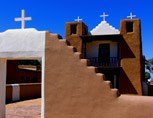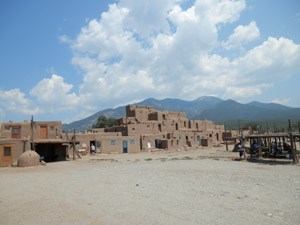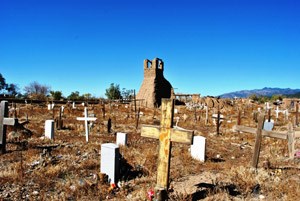
San Geronimo de Taos
Taos Pueblo, New Mexico
Coordinates: 36.438169, -105.547392
#TravelSpanishMissions
Discover Our Shared Heritage
Spanish Colonial Missions of the Southwest Travel Itinerary

Photo by wfeiden. Courtesy of Flickr Creative Commons.

Photo by Elisa.rolle. Courtesy of Wikimedia Commons.

Photo by Robert Wilson. Courtesy of Flickr Creative Commons.
Plan Your Visit
Taos Pueblo is a National Historic Landmark and a World Heritage Site located at 120 Veterans Highway in Taos, NM. Click here for Taos Pueblo’s National Historic Landmark file. The Pueblo, which is owned and administered by the Taos Tribal Council, is open to visitors. For more information, visit the Taos Pueblo website or call Taos Pueblo Tourism at 575-758-1028.
Taos Pueblo has been documented by the National Park Service's Historic American Buildings Survey as have the ruins of the original San Geronimo Church.
Last updated: July 12, 2024
